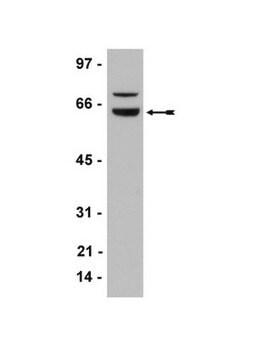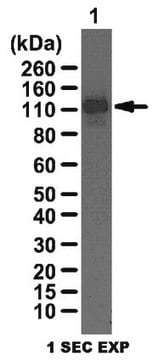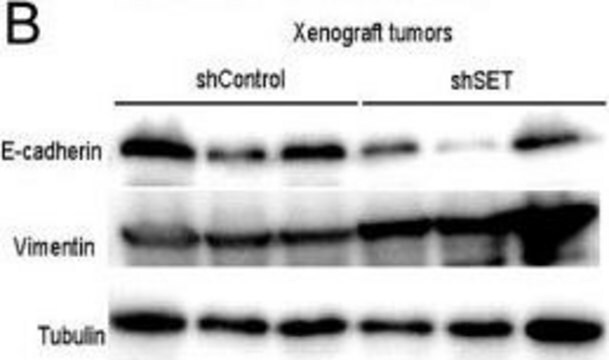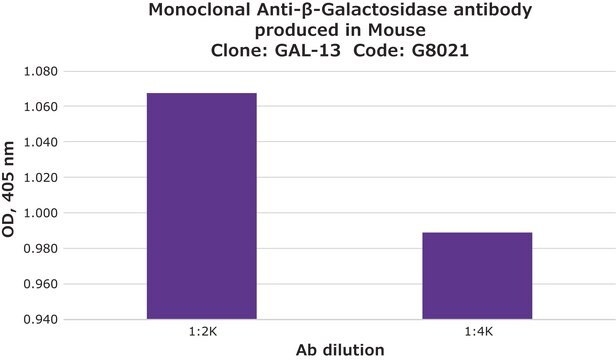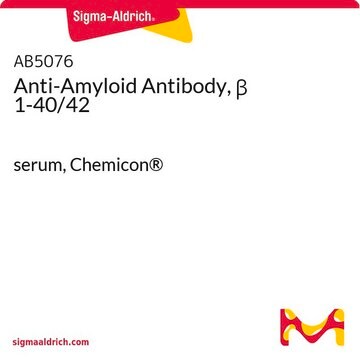05-939
Anti-LSD1/BHC110 Antibody
ascites fluid, Upstate®
Sinônimo(s):
BRAF35-HDAC complex protein BHC110, FAD-binding protein BRAF35-HDAC complex, 110 kDa subunit, Flavin-containing amine oxidase domain-containing protein 2, amine oxidase (flavin containing) domain 2, lysine (K)-specific demethylase 1, lysine-specific hist
About This Item
IF
IHC
IP
WB
immunofluorescence: suitable
immunohistochemistry: suitable
immunoprecipitation (IP): suitable
western blot: suitable
Produtos recomendados
fonte biológica
mouse
Nível de qualidade
forma do anticorpo
ascites fluid
tipo de produto de anticorpo
primary antibodies
clone
monoclonal
reatividade de espécies
mouse, human
fabricante/nome comercial
Upstate®
técnica(s)
ChIP: suitable
immunofluorescence: suitable
immunohistochemistry: suitable
immunoprecipitation (IP): suitable
western blot: suitable
nº de adesão NCBI
nº de adesão UniProt
Condições de expedição
wet ice
modificação pós-traducional do alvo
unmodified
Informações sobre genes
human ... KDM1A(23028)
Descrição geral
Especificidade
Imunogênio
Aplicação
This antibody has been reported by an independent laboratory to immunoprecipitate LSD1 from chromatin.
Immunoprecipitation:
Recommended.
Immunohistochemistry:
This antibody has been reported by an independent laboratory to detect LSD1 using paraffin-embedded tissues. (Metzger, E., 2005)
Immunofluorescence:
Recommended.
Epigenetics & Nuclear Function
Histones
Chromatin Biology
Qualidade
Western Blot Analysis:
1:500-1:2000 dilution of this lot detected LSD1 in RIPA lysates from HeLa cells.
Descrição-alvo
Ligação
forma física
Armazenamento e estabilidade
Handling Recommendations:
Upon first thaw, and prior to removing the cap, centrifuge the vial and gently mix the solution. Aliquot into microcentrifuge tubes and store at -20°C. Avoid repeated freeze/thaw cycles, which may damage IgG and affect product performance. Note: Variabillity in freezer temperatures below -20°C may cause glycerol containing solutions to become frozen during storage.
Nota de análise
HeLa cell lysate.
Outras notas
Informações legais
Exoneração de responsabilidade
Não está encontrando o produto certo?
Experimente o nosso Ferramenta de seleção de produtos.
Código de classe de armazenamento
10 - Combustible liquids
Classe de risco de água (WGK)
WGK 1
Certificados de análise (COA)
Busque Certificados de análise (COA) digitando o Número do Lote do produto. Os números de lote e remessa podem ser encontrados no rótulo de um produto após a palavra “Lot” ou “Batch”.
Já possui este produto?
Encontre a documentação dos produtos que você adquiriu recentemente na biblioteca de documentos.
Active Filters
Nossa equipe de cientistas tem experiência em todas as áreas de pesquisa, incluindo Life Sciences, ciência de materiais, síntese química, cromatografia, química analítica e muitas outras.
Entre em contato com a assistência técnica